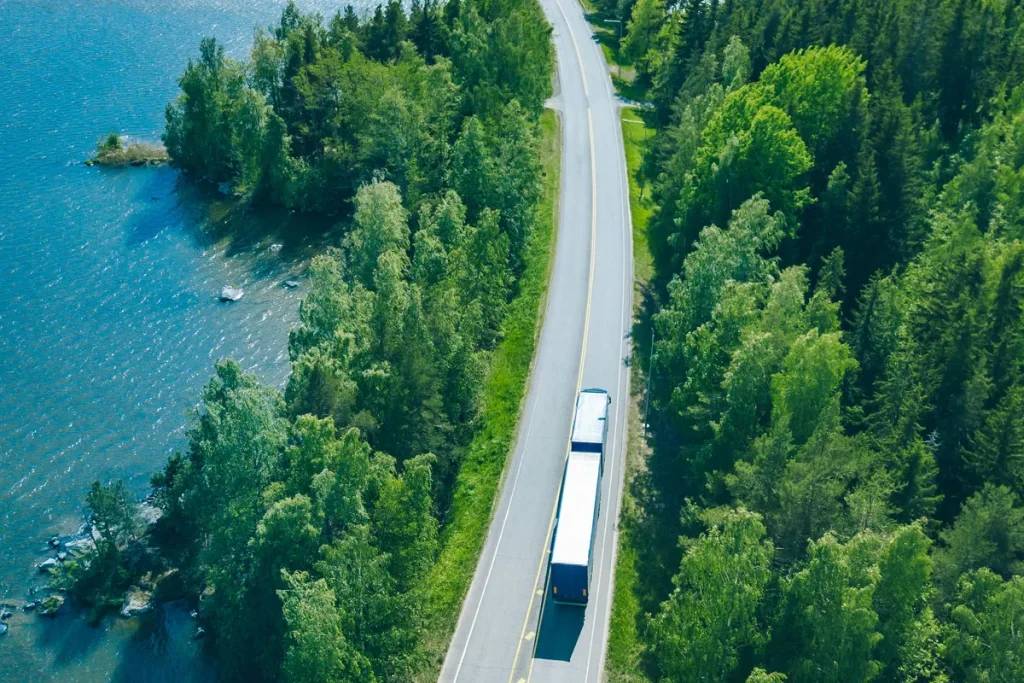The logistics sector is undergoing a crucial transformation, caught between the need for operational efficiency and the imperative to reduce environmental impact. Climate change forces a deep reflection on transport practices, pushing toward sustainable solutions such as intermodal transport. However, adopting these solutions is not without challenges and contradictions.
The Environmental Impact of Logistics
Logistics, a vital component of the global economy, significantly contributes to greenhouse gas emissions. According to the International Transport Forum, the transport sector accounts for about 23% of global CO₂ emissions, with forecasts predicting a rise to 40% by 2030 if appropriate measures are not taken.
These figures highlight the urgent need for a transition toward more sustainable logistics practices, reducing the ecological footprint of transport activities.
The Role of Intermodal Transport
Intermodal transport, which combines various modes of transport (rail, road, sea) in a single logistics chain, is often presented as a key solution for reducing emissions. The use of more eco-friendly modes of transport, such as rail, can significantly reduce the environmental impact compared to road-only freight.
However, implementing intermodality involves operational and infrastructural challenges that hinder its large-scale adoption.
Challenges in Adopting Intermodal Transport
Infrastructure and Investment
The shift toward intermodal transport requires significant investments in adequate infrastructure, such as intermodal terminals and efficient rail connections. The lack of infrastructure remains a barrier in many regions, slowing down the uptake of intermodal solutions.
Operational Complexity
Coordinating multiple transport modes introduces greater complexity in logistics management. Synchronizing delivery times, managing various operators, and the need for advanced tracking technologies are operational challenges companies must address.
Costs and Competitiveness
Although intermodal transport can offer long-term benefits, the initial costs and the perception of reduced flexibility can discourage companies from adopting it. Competition with road transport, often seen as faster and more direct, presents an additional obstacle.
Contradictions Between Efficiency and Sustainability
The pursuit of operational efficiency in logistics sometimes clashes with sustainability goals. For example, the pressure for fast deliveries in e-commerce has led to increased road transport, raising emissions. This reveals a contradiction between consumer expectations and the need to lower environmental impact.
Additionally, just-in-time policies—aimed at minimizing inventory and optimizing flow—can increase trips and therefore emissions if not managed with a sustainable approach.
Toward Sustainable Logistics: Strategies and Solutions
To address these challenges and contradictions, companies can adopt several strategies:
-
Invest in Green Technologies: Use low-emission vehicles, optimize routes with advanced software, and adopt renewable energy to reduce the environmental impact of logistics operations.
-
Collaboration Among Operators: Sharing resources and infrastructure between companies can optimize cargo loads and reduce empty trips, improving overall efficiency.
-
Consumer Awareness: Educating customers about the environmental impact of their choices and promoting sustainable delivery options can help reduce the demand for high-emission services.
-
Incentive Policies: Governments and institutions can implement tax incentives and funding programs for companies that adopt sustainable logistics practices, accelerating the transition to greener models.
The Role of PortaleGenio in Promoting Sustainable Intermodality
In this context, PortaleGenio presents itself as an innovative platform supporting companies in the transition toward sustainable intermodal transport.
By offering tools for planning intermodal routes, updated data on rail connections and Ro-Ro lines, and a B2B directory of sector operators, PortaleGenio facilitates the adoption of efficient and low-impact logistics solutions.
With a simple and intuitive visualization of the European intermodal network, PortaleGenio was created precisely to bring intermodality closer to those who still hesitate about making this transition.
Through its WebApp, companies can simulate routes, compare alternatives, and make informed decisions that balance operational efficiency with sustainability.
Conclusion
The climate challenge demands a fundamental rethink of logistics and transport. While the need for speed, efficiency, and flexibility remains central for businesses, the environmental impact of operational choices can no longer be ignored.
It is clear that intermodality is one of the most effective levers for building a more sustainable logistics system. However, its implementation requires strategic vision, investment, and collaboration among all stakeholders in the supply chain.
The contradictions between market demands and climate goals can only be overcome by integrating technology, smart infrastructure, and strong public policy.
In this complex scenario, tools like PortaleGenio provide companies with a reliable guide to navigate the transition and make more informed, responsible choices.
The future of logistics cannot ignore the balance between economic performance and environmental responsibility.
And the first step toward achieving this balance is knowledge—of the data, the routes, the alternatives.
It’s time to build logistics that not only move goods, but also help move the entire system toward a more sustainable tomorrow.
Sources
- European Parliament – External Costs of Transport Briefing (2024)
- ITF – Transport Outlook 2023
- European Commission – Towards a Green and Digital Transition in Transport
- Freight Carbon Calculator – European Clean Trucking Alliance
- Portale Genio – Mappa e strumenti per la logistica intermodale

